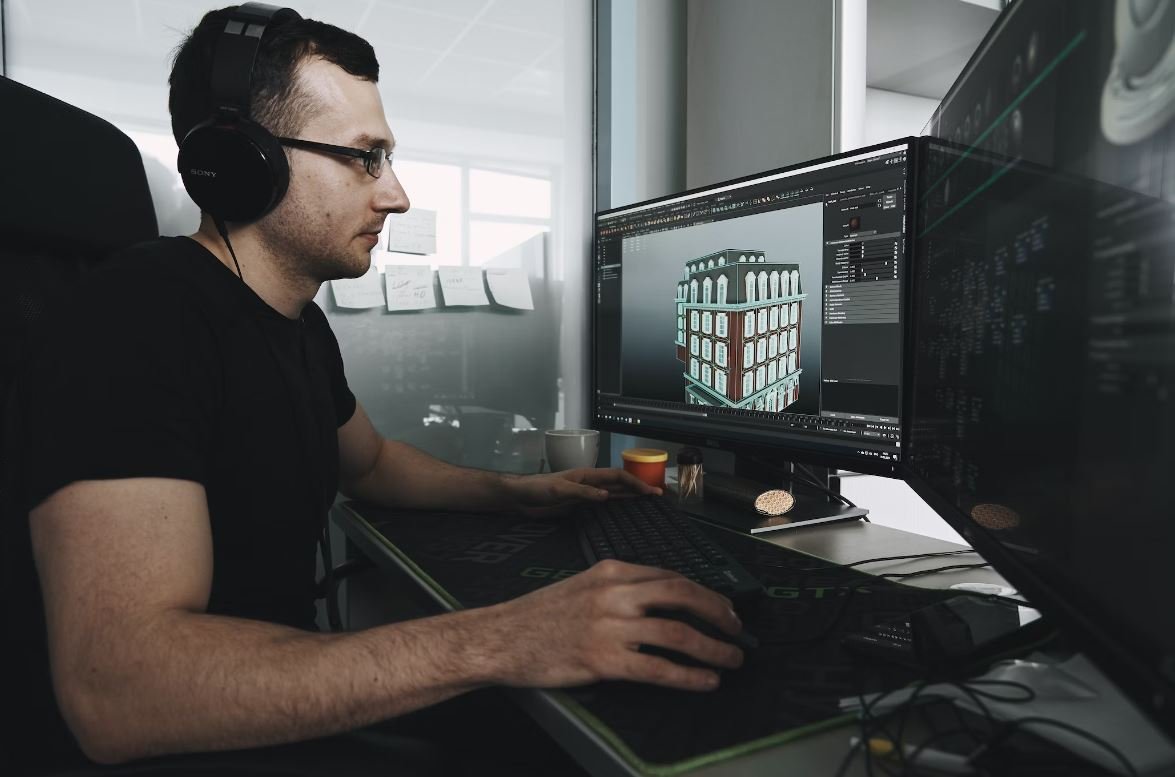Generative AI Audio Tools
Generative artificial intelligence (AI) audio tools have revolutionized the music and audio industry, allowing artists and creators to generate unique and original compositions with the help of AI algorithms. These tools utilize machine learning techniques to analyze and understand existing musical patterns, enabling them to generate new melodies, harmonies, and even entire compositions. This article explores the benefits and implications of using generative AI audio tools and how they are reshaping the creative process in the music industry.
Key Takeaways:
- Generative AI audio tools use machine learning algorithms to generate unique and original compositions.
- They analyze existing musical patterns to create new melodies, harmonies, and compositions.
- Generative AI audio tools offer enhanced creativity, inspiration, and efficiency for artists and creators.
- They have both positive and potentially challenging implications for the music industry.
Generative AI audio tools combine the power of machine learning algorithms with music theory knowledge to create new musical ideas. These tools can learn from vast musical databases and recognize patterns that are pleasing to the human ear. By doing so, they can generate melodies, harmonies, and rhythms that are both familiar and yet fresh at the same time. *Using generative AI audio tools, artists can explore new horizons of sonic creativity, pushing the boundaries of traditional composition and improvisation.*
One of the significant advantages of generative AI audio tools is their ability to boost creativity and inspiration for artists. These tools act as collaborator, assisting in the creative process by providing new musical ideas and variations that artists can build upon. It allows musicians to break out of creative ruts and explore uncharted territories in their music creation. *With generative AI audio tools, artists can find new sources of inspiration and unlock their creative potential.*
Applications and Use Cases
Generative AI audio tools have various applications and use cases in the music and audio industry. Here are a few examples:
- Composition: AI tools can assist composers in generating new musical ideas and themes, acting as a virtual co-writer.
- Sound Design: AI algorithms can generate unique and impactful sound effects for films, video games, and multimedia projects.
- Remixing: Using AI audio tools, DJs and producers can transform existing tracks by generating new variations and remixes.
- Background Music: AI tools can create customized background music for videos, commercials, and podcasts, based on the mood and desired style.
Impact on the Music Industry
Generative AI audio tools have the potential to reshape the music industry in significant ways. Here are some of the implications:
- Enhanced Efficiency: By automating parts of the composition process, generative AI audio tools can save artists time and effort, allowing them to focus on other aspects of music production.
- Legal and Copyright Concerns: As AI tools generate compositions, questions regarding ownership and copyright may arise, and new legislations may be required to address these concerns.
- Creative Ethics: The use of AI to create music raises questions about the authenticity and originality of the creations. Artists need to determine how much creative control and input should be attributed to the AI system.
- Democratization of Music Creation: Generative AI audio tools have the potential to make music creation more accessible to a broader audience, as they eliminate the need for extensive musical knowledge or technical expertise.
The Future of Generative AI Audio Tools
As generative AI audio tools continue to evolve, the possibilities for creative expression are boundless. These tools are becoming increasingly sophisticated, capable of understanding and mimicking various musical genres and styles. The future of generative AI audio tools holds the promise of collaborative partnerships between human musicians and AI systems, leading to entirely new musical landscapes. *With the ongoing advancements in AI technology, the potential for groundbreaking musical creations is incredibly exciting.*
| Tool | Features | Price |
|---|---|---|
| AImidio | Real-time composition, multi-instrument support, MIDI output | $199/year |
| NeuroMusic | Advanced chord progressions, customizable styles and genres | $29/month |
| DeepComposer | Integration with AWS services, ability to train custom models | Free |
Table 1: Comparison of various generative AI audio tools showcasing their features and pricing options.
While generative AI audio tools offer immense potential, it’s important to consider the ethical and creative implications they bring to the music industry. As artists embrace these tools, the balance between human creativity and AI capabilities needs to be carefully monitored. Through responsible usage and thoughtful integration, generative AI audio tools have the capacity to revolutionize music creation and open up new avenues of artistic expression.
| Advantages | Disadvantages |
|---|---|
| Enhanced creativity and inspiration. | Potential lack of originality and authenticity. |
| Time-saving and efficient. | Possible legal and copyright concerns. |
| Accessible to a wider audience. | Dependency on AI systems for musical ideas. |
Table 2: Overview of the advantages and disadvantages of using generative AI audio tools in music creation.
Generative AI audio tools have unlocked new possibilities for artists and musicians, amplifying their creative potential and offering fresh insights into composition and sound design. As these tools continue to advance, they will undoubtedly shape the future of music creation, enabling both established and emerging artists to explore uncharted territories in their artistic journeys.
| Industry Segment | Impact |
|---|---|
| Music Producers | Streamlined production process and new creative avenues. |
| Film and Gaming | Access to unique and tailored soundscapes. |
| Advertising | Customized audio compositions and sound effects. |
Table 3: Overview of the impact of generative AI audio tools on various industry segments.

Common Misconceptions
Generative AI Audio Tools
There are several common misconceptions surrounding generative AI audio tools. These misconceptions often stem from misunderstandings or limited knowledge about the capabilities and limitations of this technology. It is important to debunk these misconceptions to have a more accurate understanding of generative AI audio tools.
- Generative AI audio tools have limited creativity.
- Generative AI audio tools require extensive technical knowledge to use.
- Generative AI audio tools are perfect for creating original compositions effortlessly.
The technology is designed to replace human musicians
One common misconception is that generative AI audio tools aim to replace human musicians entirely. In reality, these tools are created to augment the creative process, providing inspiration and new ideas to human musicians rather than replacing their skills and artistic expression.
- Generative AI audio tools can be used as powerful tools for collaboration between human musicians and the system.
- Human interpretation and input are crucial in adding emotional depth to the music generated by these tools.
- The technology should be viewed as an assistant rather than a replacement for human musicians.
Generative AI audio tools lack originality
Another common misconception is that generative AI audio tools cannot create truly original music and soundscapes. While it is true that the technology is trained on existing music and can mimic certain styles, it is also capable of generating novel and innovative compositions that can surprise and inspire both creators and listeners.
- Generative AI audio tools can break musical conventions and explore unconventional sounds and patterns.
- These tools have the potential to push the boundaries of musical creativity by offering new perspectives and possibilities.
- The output of generative AI audio tools can be used as a starting point for further exploration and refinement by human musicians.
Generative AI audio tools are flawless
Some people may believe that generative AI audio tools are infallible and always produce perfect compositions. However, like any technology, these tools have limitations and imperfections. It is important to understand these limitations to manage expectations and make the most out of generative AI audio tools.
- Generative AI audio tools may require guidance and adjustment to achieve the desired result.
- The output can sometimes be inconsistent or require additional editing and refinement.
- Understanding the strengths and weaknesses of the tool can help leverage its potential effectively.
Generative AI audio tools are inaccessible and expensive
Many people may assume that generative AI audio tools are only accessible to highly skilled professionals or are prohibitively expensive. However, the field of generative AI audio tools is constantly evolving, and there are various options available for different levels of users, including beginners.
- There are user-friendly generative AI audio tools that require minimal technical expertise to operate.
- Some tools are available as affordable software or even free open-source projects.
- Community support and online resources make it easier for beginners to delve into generative AI audio tools.

Generative AI Audio Tools
The use of generative AI in audio production has revolutionized the way we create and experience sound. These cutting-edge tools employ complex algorithms to generate music, sound effects, and even human-like voices. This article explores ten fascinating examples that demonstrate the power of generative AI in the audio industry.
1. Evolution of Music Genres
Using generative AI, music genres can be analyzed and visualized. This table showcases the evolution of different music genres over time, highlighting prominent artists and influential tracks within each genre.
2. Production Time Comparison
This table compares the production time of a traditional song creation process versus using generative AI. It demonstrates how AI tools can significantly reduce the time required for composing and producing a high-quality piece of music.
3. Emotional Impact of AI-Generated Music
An experiment measured the emotional impact of music created by humans versus generative AI. This table presents the results, revealing the emotional response elicited by both types of compositions.
4. Sound Effect Variability
Generative AI can produce an endless variety of sound effects for movies, games, and other media. This table showcases the range and diversity of sound effects that can be generated, divided into categories such as explosions, creatures, and atmospheres.
5. AI Voice Cloning Accuracy
AI voice cloning allows for the replication of a person’s voice by analyzing vocal patterns and inflections. This table illustrates the accuracy of different AI voice cloning tools, comparing their ability to recreate specific voices.
6. Melody Generator Comparison
Various AI melody generators have been developed to assist musicians. This table presents a side-by-side comparison of different melody generators, evaluating their ease of use, versatility, and ability to mimic different musical styles.
7. Collaborative Music Composition Statistics
Generative AI can facilitate collaboration between human musicians. This table displays statistics from a study that examined the impact of AI-generated suggestions on the collaborative music creation process.
8. AI Improvisation Challenge Results
Several AI improvisation challenges have taken place to test the capabilities of generative AI in live performances. This table exhibits the results of one such challenge, ranking different AI systems based on their improvisation skills.
9. Harmonization by Generative AI
Generative AI can harmonize melodies and create accompanying chords. This table showcases different harmonization techniques implemented by AI tools, comparing their effectiveness in generating harmony that complements the original melody.
10. Sentiment Analysis of AI-Generated Lyrics
AI systems can generate lyrics for songs, but do they convey the intended sentiment? This table depicts sentiment analysis scores of AI-generated lyrics, evaluating their ability to express specific emotions or themes.
In conclusion, generative AI audio tools have brought about groundbreaking innovations in the music and sound industry. These tables demonstrate the capabilities of such tools in various aspects, including genre analysis, production efficiency, emotional impact, sound effects, voice cloning, melody generation, collaboration, improvisation, harmonization, and lyric sentiment analysis. As technology continues to advance, we can expect generative AI to further enhance our audio experiences.
Frequently Asked Questions
What are Generative AI Audio Tools?
Generative AI Audio Tools are computer programs or software that use artificial intelligence algorithms to create and generate audio content. These tools can compose original music, generate natural-sounding voices, or create realistic sound effects, among other things.
How do Generative AI Audio Tools work?
Generative AI Audio Tools work by utilizing machine learning algorithms, such as deep neural networks, to analyze and learn patterns from existing audio data. These tools then use this learned knowledge to generate new audio content based on the provided inputs or parameters.
What types of audio can Generative AI Audio Tools create?
Generative AI Audio Tools can create various types of audio, including but not limited to music compositions, instrumental tracks, vocal arrangements, audio effects, soundscapes, and ambient noises.
Are Generative AI Audio Tools suitable for professional use?
Yes, many Generative AI Audio Tools are designed to be professional-grade and can be used in professional music production, sound design, and other audio-related industries. However, the suitability may vary depending on the specific tool and its level of sophistication.
Can Generative AI Audio Tools be used by beginners or amateurs?
Yes, there are Generative AI Audio Tools available that are designed with user-friendly interfaces and features, making them accessible to beginners and amateurs. These tools often provide presets and easy-to-use controls to help users create engaging audio content without extensive technical knowledge.
What are the benefits of using Generative AI Audio Tools?
The benefits of using Generative AI Audio Tools include the ability to quickly generate unique and original audio content, explore new creative possibilities, save time in the composition or sound design process, and experiment with different styles or genres. These tools can also assist in overcoming creative blocks or providing inspiration.
Can Generative AI Audio Tools replace human creativity?
No, Generative AI Audio Tools cannot replace human creativity. While these tools can generate impressive audio content autonomously, they still rely on human input and direction to define the parameters, styles, and artistic vision. Generative AI is considered a tool to augment and enhance human creativity, rather than entirely replace it.
What are the limitations of Generative AI Audio Tools?
Generative AI Audio Tools have certain limitations. They can sometimes produce output that might lack the emotional depth, subtlety, or context that human creators can provide. The quality of the generated audio also depends on the training data used, and the tools may struggle to replicate certain complexities or nuances found in human-made music or sound.
Are there legal issues associated with using Generative AI Audio Tools?
There can be legal considerations when using Generative AI Audio Tools, particularly when it comes to copyright and licensing. It is essential to ensure that the tool’s usage complies with intellectual property rights and that any generated content is used in accordance with applicable laws and regulations.
Where can I find Generative AI Audio Tools?
Generative AI Audio Tools can be found through various online platforms and websites. Some software developers offer dedicated tools for purchase or subscription, while others provide open-source options. It is advisable to research reputable sources, read user reviews, and consult with professionals in the audio industry to find suitable tools for your specific needs.




